The marshes at Pantanos de Villa
As we headed out of Lima it wasn't long before I saw the marshes coming up on the west side of the highway. I asked the driver if this was Pantanos de Villa and he said it was. I asked Sam if she was okay to stop here now since it was on our side of the road and she agreed. We had read that in the past this area had been a dangerous place to stop as muggings were rather frequent, and cars had been broken in to on multiple occasions. But in the last year or so some major strides had been taken with several security check points. We pulled into the headquarters to pay an entrance fee and hired a guide to walk around with us. Our first stop was at a small pond surrounded by reeds. The first birds were BLACK VULTURES perched on palm trees, fences, and any other structure they could find. I spotted some movement along a fence over a small pond and found a SPOTTED SANDPIPER in my view--a bird that a month ago was probably in the mountains somewhere in the western United States.
Great Grebe at Pantanos de Villa
At the pond the lifers began to pile up. First was a GREAT GREBE sleeping just offshore. Several GRAY-HOODED GULLS were circling out over the water, while a SLATE-COLORED COOT swam by as we watched. On the far shore were hoards of egrets and herons. LITTLE BLUE HERONS and BLACK-CROWNED NIGHT-HERONS were mixed in among the hundreds of CATTLE EGRETS. Several SNOWY and GREAT EGRETS could also be picked out among the mix. A BELCHER'S GULL made a pass and in the field behind me a BLUE-BLACK GRASSQUIT could be heard buzzing--but this pond would hold a couple birds I had a bigger interest in. Not to waste time, and being just a tad early for the breeding season I broke down and pulled my iPod from my bag. I spun the dial to the flycatchers section and queued up the most colorful bird in the marshes of Peru, the MANY-COLORED RUSH-TYRANT. Almost instantly 2 birds came flying out of the reeds and overhead--one bird perched long enough to should a couple shots before disappearing into the thick.
#15 on my Top 25 list for Peru--Many-colored Rush-Tyrant
I switched playlists and found my second target song. As I played the chattering, a WREN-LIKE RUSHBIRD came zipping past us low over the water. The biggest surprise from this dull streaked black and brown marsh birds was that is had bright reddish-pink wing bars that really stood out in flight. The rushbirds wasn't going to pose and quickly flew back past us and around the reeds out of view. It was okay though, I had quickly picked up two birds I had wanted to see very much. We headed back to the visitor center with our guide, and had the driver take us to the beach and another pond adjacent to it. As we drove down the road BLUE-AND-WHITE and CHESTNUT-COLLARED SWALLOWS could be seen swarming low over the road ahead of us. A couple of SCRUB BLACKBIRDS could be heard singing just out of sight in a nearby field, and an AMERICAN KESTREL made a pass overhead. We pulled to the end of the road at the beach and got out of the car, the guide motioned for us to follow her south towards a large pond.
My lifer American Oystercatcher
Several PERUVIAN PELICANS shared a small islet with a number of NEOTROPIC CORMORANT. SLATE-COLORED COOTS and COMMON GALLINULE were swimming on the open water. GREAT and PIED-BILLED GREBE were present as were a number of the "black-headed" form of the RUDDY DUCK. As we walked along the shore we flushed a number of shorebirds that I hadn't expected to be in Peru yet. SEMIPALMATED PLOVERS, BAIRD'S and LEAST SANDPIPERS, and more SPOTTED SANDPIPERS were present--while a small flock of SANDERLING flew past through the surf. More birds I would expect in Utah at this time of year. Next were the RUDDY TURNSTONES, followed by my lifer AMERICAN OYSTERCATCHERS which were numerous here. Across the pond in the tall grasses were more coots and herons with a several PUNA IBIS mixed in. I found several pairs of WHITE-CHEEKED PINTAIL bedded down amongst the larger birds. A lone ROSEATE SPOONBILL stood out among the masses of other darker birds, adding some nice color to the gray sand and dark skies.
The 4 common coastal gulls in Peru (clockwise from top left):
Kelp, Belcher's, Gray, and Gray-hooded Gulls
As we neared the end of the pond the gulls took over as the majority of the birds. BELCHER'S and KELP GULLS numbered in the 100's here, while 50-60 GRAY GULLS roosted on the beach. Several ANDEAN GULLS were present among the more prevalent GRAY-HOODED GULLS. I was surprised when I spotted a lone FRANKLIN'S GULL sitting on the water--surely this birds should have been several 1,000 miles north right now. Perhaps the rarest birds of the trip was found here in a BROWN-HOODED GULL, typically found further south on the continent.
Apparent Brown-hooded Gull (left) with a more common Gray-hooded Gull
In a matter of minutes I had exhausted all the possible gulls for the trip--that was a nice feeling. It was quite an experience gulling on another continent and actually seeing a bird form back home mixed into the fray. On the walk back to the car we only added one new trip bird when a small flock of BLACK SKIMMERS came flying past. I asked the guide where we could find Thick-Knees. She told us it was very "dificil" to see them as they blended in, but she would take us to a spot they are normally found. We drove up the road a ways before pulling over next to what we would call a dry playa on the south shore here in Utah. It was a large dirt basin with plants that looked similar to greasewood. The guide and I got out and crossed a small creek onto a dirt road that entered the basin. I started scanning--no birds. We walked out through the brush and came upon hundred of shorebird tracks--it appeared the thick-knees spent a considerable amount of time here, but we had absolutely zero luck finding any. In the distance a pair of KILLDEER could be heard whining, while a HARRIS'S HAWK squealed form a palm tree nearby.
Sam photographing the ocean... Although I think she may have actually been
taking pictures of the gulls :)
The Peruvian Thick-Knee seemed like a sure thing here--from the reports I had read, this was the place and it was an easy get--just not for me. My first big miss of the trip. Back in the car we headed down the road until the driver stopped and pointed to a bird on a wire above the road. Perched high above the road was the one and only PERUVIAN MEADOWLARK of the trip--thank goodness Mr. Fernandez was paying attention. A VERMILION FLYCATCHER perched across the road while a pair of CROAKING GROUND-DOVE could be heard from a nearby neighborhood. I scanned the fields as we drove by hoping to pick up a thick-knee as we left--but it wasn't mean to be. Back at the visitors center I tipped the guide and thanked her for her time. It had been a very successful stop and we picked up all but a couple of birds I had hoped to find. The endemic Raimondi's Yellow-Finch, and the spectacular Parrot-billed Seedeater were elusive along with the thick-knee--but that's birding.
The only Peruvian Meadowlark of the trip.
As we left the marsh I thought about what a different place it must have been a year or two before--being mugged or robbed never even crossed my mind while we were there. Back on the highway we continued south towards our next stop a the Pacachamac Ruins.
17 life birds here / 31 total trip life birds / 62 total trip birds
Photos from Pantanos de Villa Birding on TimAveryBirding.com
Labels: Peru, Travel, trip reports
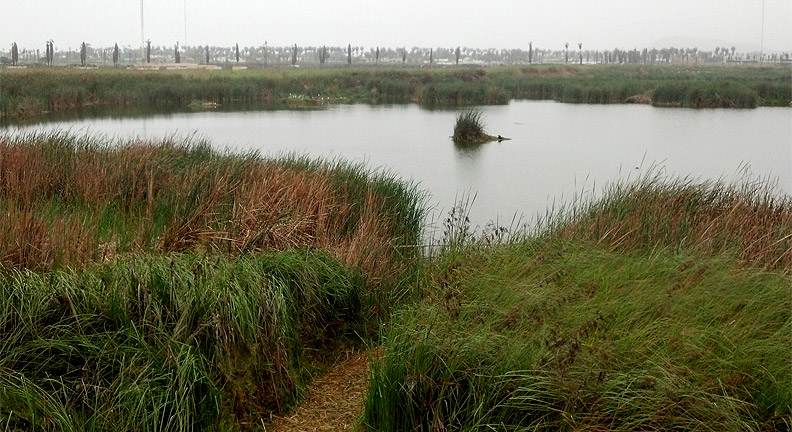
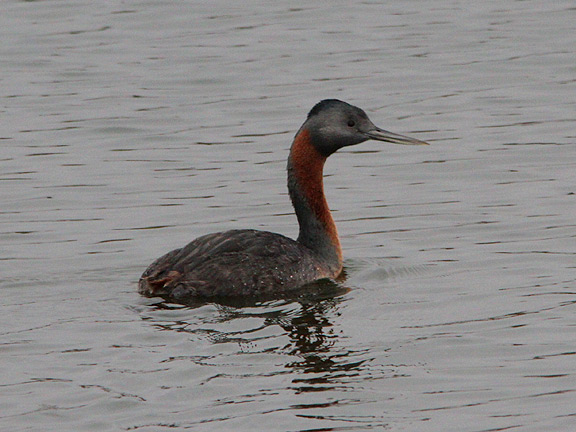
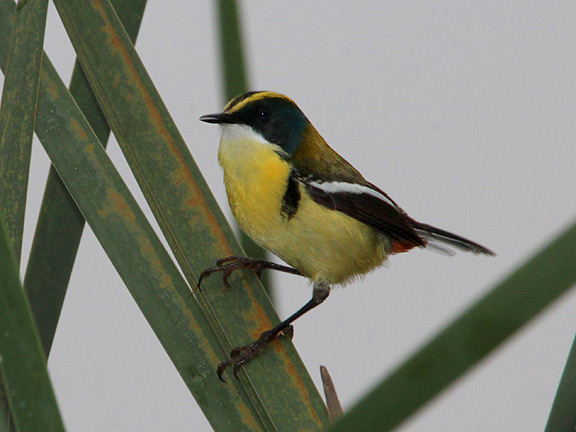
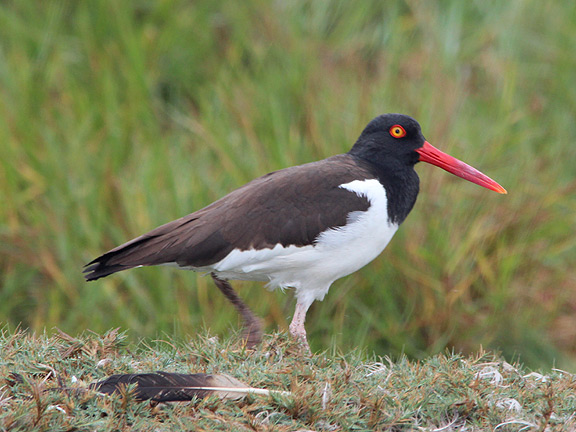

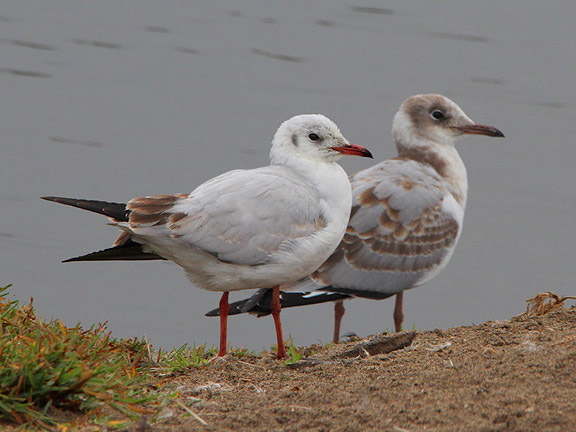

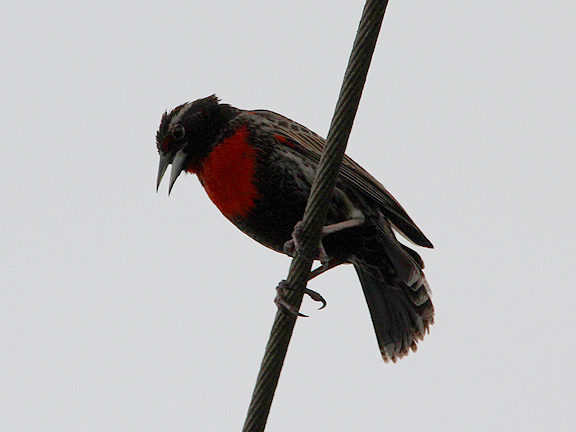

6 Comments:
I love reading these reports! Thank you so much for sharing, and for the great photos.
Thanks for sharing. I have to live vicariously through these posts as I've never been birding outside of the USA.
The rush tyrant is a beautiful little bird. I guess that's their version of a yellowthroat?
@Kiirsi: I'm glad you're enjoying them! Lots more to come in the next week!
@John: I never thought I would bird much outside of the US, until last summer. Now I've been to Costa Rica and Peru. We are already planning our next trip which will take us to yet another continent... Stay tuned!
@Anonymous: Isn't it though? I ended up seeing around a dozen at 3 or 4 locations in the country. Truly a spectacular little bird. And yes I would say it is their version of a yellowthroat--I would compare their rushbird to our Marsh Wren as well
It's pretty awesome that you got your lifer American Oystercatcher on the Pacific Coast.
@Kenny: Haha, too bad it was in South America!
Post a Comment
Subscribe to Post Comments [Atom]
<< Back to Previous